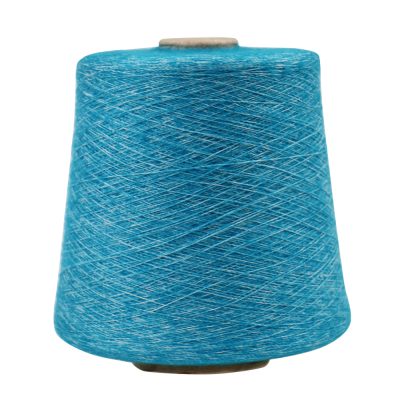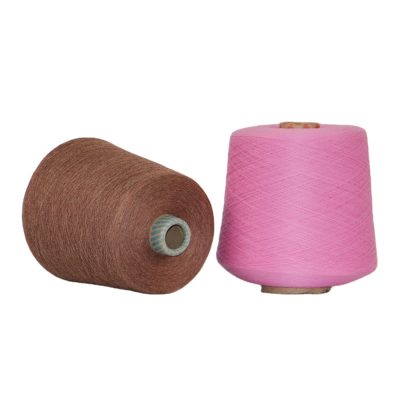When chemical fiber is used to imitate wool from the fiber point of view, it is initially based on the length and fineness characteristics of the wool fiber. In the spinning process, the chemical fiber is spun into a length and linear density similar to that of wool fiber, such as a linear density of 2.5-3.3 dtex and a length of 51-102 mm. The commonly used wool-like chemical fibers include high-shrinkage fibers, profiled fibers, composite fibers, cationic dyeable polyester, flame-retardant fibers, ultra-fine fibers, air textured yarns, mixed fiber yarns, etc.
1. High shrinkage fiber
High shrinkage fiber refers to the fiber that can produce greater shrinkage under the action of heat. Common high shrinkage fibers include high shrinkage acrylic and high shrinkage polyester.
(1) High shrinkage acrylic
Because acrylic fiber does not have crystalline and amorphous regions in the strict sense, its ordered structure makes it unable to prevent large-scale thermal movement of the chain segment, so that acrylic fiber has unique thermoelasticity, can shrink, and can produce acrylic fiber Bulk yarn.
production method
There are two methods for producing high shrinkage acrylic fiber, namely stretching method and chemical modification method. The stretching method is to stretch the fiber macromolecular chain at a temperature higher than the glass transition temperature of the acrylic fiber and orientate it along the fiber axis, and then cool it sharply to temporarily fix the shape and tension of the fiber macromolecular chain. When the acrylic fiber is treated in a relaxed state, it causes significant shrinkage of the fiber in the length direction. The chemical modification method is to increase the content of the second monomer methyl acrylate, or use a thermoplastic second monomer to copolymerize with acrylonitrile to reduce the tightness of the arrangement of fiber molecules, which can significantly increase the shrinkage rate of the acrylic fiber.
(2) High shrinkage polyester
production method
High-shrinkage polyester is generally obtained by modifying crystalline polyester. There are two main production methods: one is to use special spinning and drawing processes. For example, POY silk can be made by low-temperature stretching and low-temperature setting The high shrinkage polyester with boiling water shrinkage of 15%-50% is obtained; the other is to use chemical modification method to produce modified copolyester, and then spin it.
























